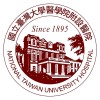
Prospective Analysis of Eosinophilic Esophagitis in Patients Presenting With Dysphagia
EsophagitisThis is a prospective descriptive cross sectional study to determine the percentage of patients presenting with dysphagia who are found to have eosinophilic esophagitis (EoE) and to establish which presenting factors warrant esophageal biopsies. We hypothesize that a greater than expected percentage of patients who are biopsies will have histologic changes consistent with EE.

Esophageal Motility in Eosinophilic Esophagitis Evaluated by High Resolution Manometry.
Eosinophilic EsophagitisEsophageal Motility in eosinophilic esophagitis will be evaluated by High Resolution Manometry before and after medical treatment - motility is suspected to change/improve after therapy.

Effects of Swallowed Steroids on Bone Density and Growth in Pediatric Eosinophilic Esophagitis
Eosinophilic EsophagitisEosinophilic esophagitis (EoE) is characterized by allergy-driven inflammation of the esophagus leading to a variety of gastrointestinal symptoms and increased healthcare utilization. While considered a rare disease, EoE is rapidly increasing in prevalence in the United States. Treatment options are limited and include dietary modifications with the elimination of suspected food triggers or pharmacological options including proton pump inhibitors (PPIs) and swallowed corticosteroids. Compliance to strict elimination diets is difficult thus many patients elect to use swallowed corticosteroids. Because nearly half of all EoE patients are treated with swallowed corticosteroids there is a growing concern regarding the long-term effects of this class of medication.4 It is known that oral corticosteroids can compromise bone mineral density and growth velocity5-7. Furthermore, there have been multiple studies exploring the relationship between inhaled corticosteroids (ICS) and endocrine effects in asthmatics. While the risk of ICS use is less compared to systemic corticosteroids, higher ICS doses do cause deleterious effects on growth and bone health8-11. Currently, there are no published studies examining the effect of swallowed corticosteroids on bone mineral density or growth velocity in patients with EoE. Given the route of administration, there may be more systemic absorption leading to a higher risk of long-term complications. The proposed work will address the following specific aims: Specific Aim 1: Assess effects of swallowed corticosteroids on bone mineral density (primary outcome) in children 5-12 years of age with EoE compared to age matched controls. Specific Aim 2: Evaluation of the effect of swallowed corticosteroids on growth velocity.

Adipokines and the Risk of Reflux Esophagitis
Visceral ObesityReflux EsophagitisWe aimed to risk faoctors for GERD and association between visceral obesity, plasma adipoline(leptin, adiponectin, IL-6, TNF-α)and development of reflux esophagitis in healthy Koreans.

Incidence of Reflux Esophagitis After Pancreaticoduodenectomy
Reflux EsophagitisReflux esophagitis is a common complication following distal gastrectomy. According to the investigators preliminary data, an Roux-en--Y gastrointestinal reconstruction in pancreaticoduodenectomy is associated with higher rates of reflux esophagitis. In this study, the investigators will investigate the incidence of reflux esophagitis after above procedure by the 24-h pH monitoring of esophagogastric junction.

Development, Validation and Evaluation of an Adult and Pediatric Eosinophilic Esophagitis Activity...
Deglutition DisordersEsophageal Diseases1 moreEosinophilic Esophagitis (EoE) is a chronic inflammatory disease of the esophagus affecting children and adults. The most frequent symptoms are swallowing difficulties and thoracic pain. The disease has first been described in the 1980s and is found with rapidly increasing frequency mainly in industrialized countries. The factors that lead to EoE are until now incompletely understood, of importance, the disease is found more frequently in men and patients suffering from allergic diseases (e.g., Asthma). So far there exists no activity index to define the severity of EoE; such an index is urgently needed for future clinical trials to determine the efficacy of current and future therapies. The investigators' 3-year project, carried out in cooperation with international EoE experts, aims at the development of an activity index for adult and pediatric EoE patients that will be used in future clinical trials as well as observational studies.

Adverse Events During Upper Gastrointestinal Endoscopy
Patients Need Upper Gastrointestinal EndoscopyPeptic Ulcer3 moreThe primary objective is to investigate the adverse events during upper gastrointestinal endoscopy with and without sedation in Chinese population

Prospective Multicenter Nationwide Registry of Children With Eosinophilic Esophagitis
Eosinophilic EsophagitisRegistry of demographic, clinical, endoscopic and histological data at baseline. Registry of patients treated with PPI: Clinical, endoscopic and histological response at 8-12 weeks of induction treatment Clinical, endoscopic and histological response at 6 and 12 months weeks of maintenance treatment Registry of patients treated with two foods elimination diet: Clinical, endoscopic and histological response at 8-12 weeks of induction treatment Identification of food trigger: milk, gluten or milk and gluten Clinical, endoscopic and histological response at one year elimination of food trigger Registry of adverse events Registry of patients treated with swallowed steroids (budesonide or fluticasone): Clinical, endoscopic and histological response at 8-12 weeks of induction treatment Clinical, endoscopic and histological response at 6 months of maintenance steroid treatment Registry of adverse events

Assessment of GERD Knowledge Level Among Patients With it in Korea
EsophagitisReflux1. Research topic: How much do patients with GERD know about their own disease in Korea? (multicenter survey) 2. Questionnaires for multicenter survey: Questionnaire 1 - include items for basic characteristics of participant patients Questionnaire 2 - modification of GERD knowledge test which was used in BMC Health Services Research 2008;8:236 (Prof. Jorgen Urnes) 3. Subjects: patients with GERD in secondary or tertiary hospital 4. Participant institutes: GERD club members, The Korean Society of Neurogastroenterology and Motility

Immunologic Factors in Reflux Esophagitis and Barrett's Esophagus
Reflux EsophagitisHiatal HerniaBy using combination of the expression of COX-2 and NOS and immunologic reaction in the esophagus with manometry of LES and cruel diaphragm and 24 hr esophageal pH monitoring to investigate the mechanisms and to make a new and more clinically applicable clarification of these reflux diseases will be valuable in the clinical management and prevention. We will perform the following works and complete the objectives: 1) comparing the difference of immuno-inflammatory reactions among NERD, reflux esophagitis and Barrett's esophagus; 2) the different expression of PGs & COX-2 in functional heartburn, hiatus hernia, NERD, reflux disease and Barrett's esophagus; determining the subtype of EP receptor (EP1~4); 3) determining and comparing the expression of NOS in the esophagus; 4) investigating the role of ROS in the esophagus; 5) in correlating cytokine, COX-2 and NOS with LESP, TLESR, diaphragm EMG and 24-hour esophageal pH ; 6) the difference of expression of cytokine, atrophic gastritis and Hp in gastric mucosa, in correlating with intragastric acid status, among functional heartburn, hiatus hernia, NERD, erosive esophagitis and Barrett's esophagus; to determine whether should eradicate Hp in reflux esophageal disease; 7) the effects of lipid peroxidation related immunologic reaction, with relation to COX-2 and NOS, in the inflammatory activity and esophageal carcinogenesis of esophagus; 8) the effects of cytokines, COX-2 and NOS on the apoptosis in these reflux esophageal diseases; 9) integrating immuno-inflamatory reaction, COX-2, NOS with manometry of LES and diaphragm, and 24-hour pH monitoring and intragastric pH to newly clarify GERD into evidence based categories.
